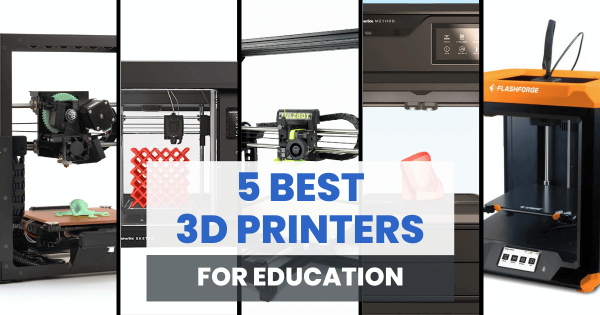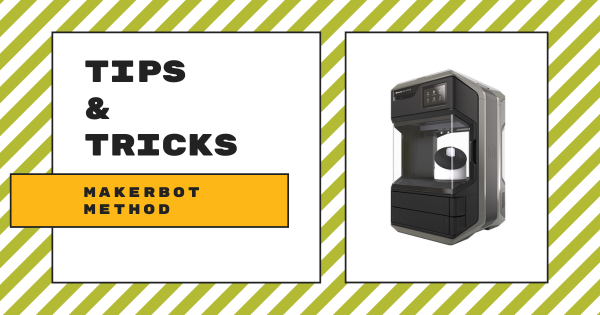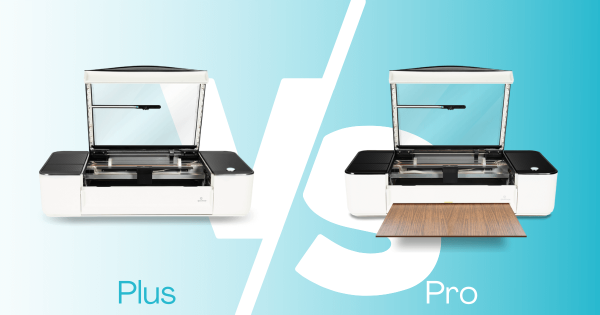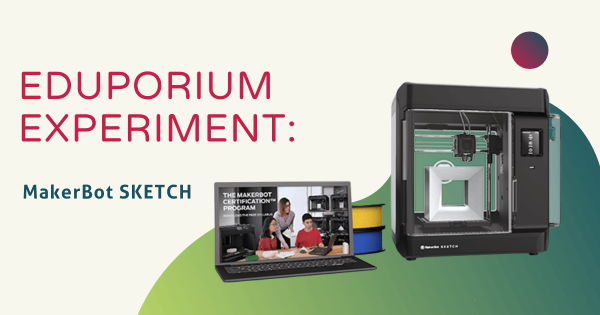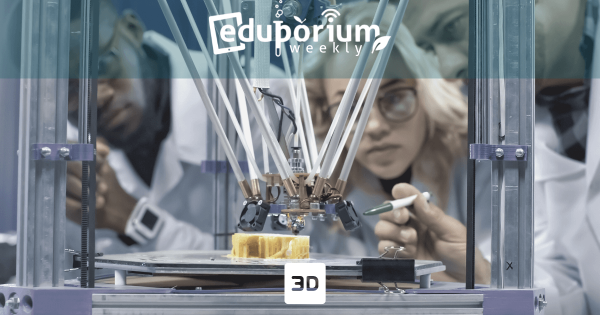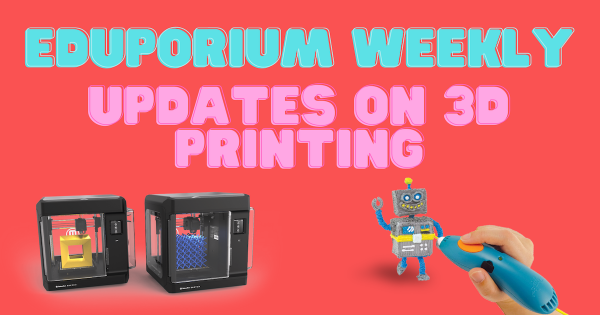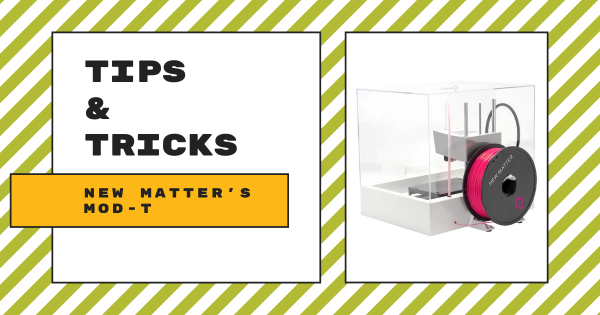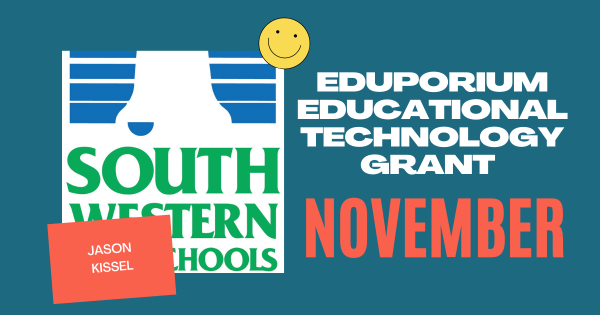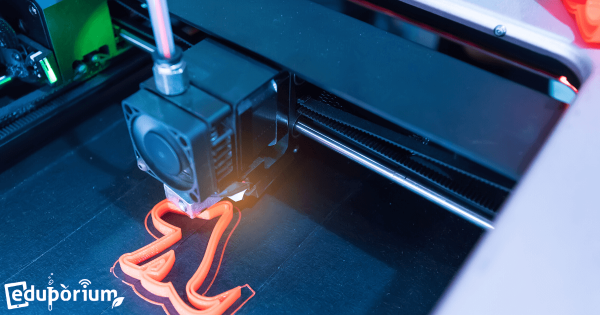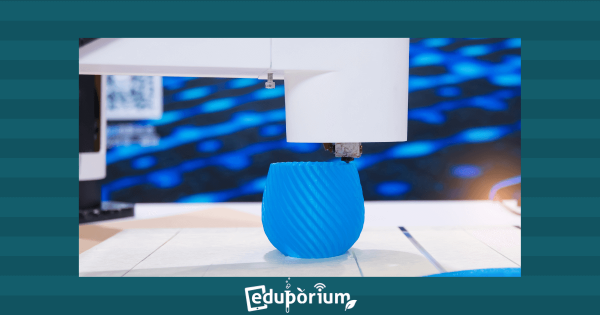When it comes to crafting the perfect makerspace experiences, educators can try incorporating a wide variety of hands-on STEAM activities. To truly maximize student engagement and empower them all to feel like authentic problem solvers, however, 3D printing is an awesome option and these are some of the best educational 3D printers for K–12 school STEM programs.
3D Printer
The integration of 3D printers into student learning environments brings about a myriad of educational benefits, transforming the way kids conceptualize, create, and problem solve. At the core of its value lies its ability to foster hands-on, experiential learning that transcends typical classroom boundaries. First and foremost, 3D printers offer students a tangible medium to bring their ideas to life. By allowing them to design and prototype three-dimensional objects, children can explore their imaginations and turn abstract concepts into realities. Whether they are designing models, engineering prototypes, or artistic sculptures, 3D printing provides powerful outlets for self-expression and experimentation. Moreover, 3D printing helps facilitate interdisciplinary learning by bridging the gap between theory and practice across various subjects.
-
Tips & Tricks | The MakerBot METHOD 3D Printer
Like most educational 3D printers, the METHOD melts materials and then it extrudes them onto the build plate in very thin lines, going layer by layer to create the object. The METHOD, specifically, is equipped with a heated build chamber that allows for all printed material to cool slowly, which is a process known as fused deposition modeling. Head inside -
Glowforge Plus Or Pro? Which 3D Laser Printer Is Best For STEM?
The Glowforge Pro is the more capable Glowforge printer and, as such, its price tag is higher. Of course, your students can do more with a Glowforge Pro, including using its Pro Passthrough technology, which allows them to create larger prints out of infinitely long materials. If they want to start with simpler Glowforge projects, however, the Glowforge Plus might -
Eduporium Experiment | Trying MakerBot SKETCH Classroom
The MakerBot SKETCH Classroom solution comes with lots of 3D printing materials and curriculum resources that help teachers effectively integrate 3D printing lessons in their schools. Most notably, it includes two compact MakerBot SKETCH 3D printers, access to MakerBot’s CloudPrint platform, MakerBot certification licenses, and over 600 makerspace lesson plans. -
Eduporium Weekly | Integrating 3D Printing in Education
Today, 3D printing has all sorts of positive implications in many different industries, including medical, science, military, and more. It’s with these innovative machines that anybody can create objects that are precisely crafted to specific needs. By solving challenges with 3D printing, students can get ready for the future and learn some key skills. -
Eduporium Weekly | Updates On 3D Printing In Education
Under ordinary conditions, 3D printing is among the most popular avenues for technology teachers to take advantage of all of the advances in STEAM instructional tools. By combining both physical and digital construction, 3D printing helps students think like an engineer, solve pressing problems in a very unique way, collaborate with classmates, and a lot more. -
We Have an Announcement: The Recipient of November's Grant!
For the month of November, we’ve awarded the grant to Jason Kissel, who works with students and teachers at over 30 schools! Jason is the Tech Liaison from the South-Western City School District in Grove City, Ohio and he is responsible for helping teachers at the district’s 32 schools integrate new tech into their instruction. -
Take 3D Printing Further With An End-To-End Project Library
It can be tough knowing what to do with a 3D printer in the classroom. With MyStemKits, however, it doesn’t have to be. This subscription includes grade-specific lesson plans, one-of-a-kind models, and STEM learning that’s truly interdisciplinary. Here’s how teachers can create curriculum that’s problem-based, standards-driven, and future-facing! -
Industries in which 3D Printing Could Take Over
Engaging in 3D printing allows students to experience learning from brand new angles and put their creativity to use in ways that will legitimately help them prepare for their futures. Right now, scientists seem to using 3D printing for something new every day—in some industries that you would expect and others that are pretty surprising.




